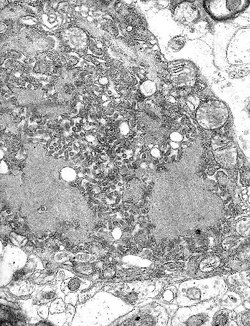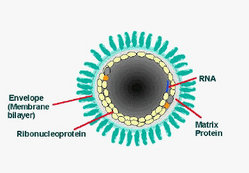FOND DU LAC, Wis. -- Last September, Jeanna Giese, 15, was attending church when she noticed that a brown bat had tumbled to the floor. Jeanna has a soft spot for animals and picked up the bat. On the way outdoors to set the bat free, it bit one of her fingers.
Jeanna thought nothing of the tiny bite, but she should have. A month later, she began feeling feverish and achy. By the time she was taken to Children's Hospital of Wisconsin in Milwaukee, her speech was slurring and she was seeing double and blacking out.
Doctors diagnosed Jeanna's condition as rabies, a deadly viral disease that is usually transmitted to people via the bites of infected animals. Only five people have ever survived rabies, and all five had been given a rabies vaccine shortly after they were bitten.
Jeanna had been admitted too late for the standard vaccine treatment, and she was close to death. So with the consent of her parents, doctors tried an experimental treatment. They put her in a coma (a state of unconsciousness) and gave her a cocktail of drugs that stimulated her disease-fighting immune system.
Rabies kills by destroying the body's nerves. As the drugs went to work, the doctors observed a remarkable occurrence: Jeanna's damaged nerves began reconnecting themselves to her muscles and her heart. "It's really almost like watching a rebirth" Rodney Willoughby, one of the doctors, told the Milwaukee Journal Sentinel.
When Jeanna came out of her coma, she did not show any signs of damage to her intellect. But she was physically disabled and is now undergoing physiotherapy, learning to move all over again.
Robb Jensen, the principal at St. Mary's High School, says he is preparing for Jeanna's return to the school, where she was a top student. He said providing the extra tutoring that she will need will be a problem for him, but it is one that he is delighted to have.
Fill in the Blank
Find the word or words that best complete each sentence. Write the answers in the blanks provided.
1. Rabies is a deadly disease caused by a--.
2. A vulture is an example of a--.
3. A--an animal walks on two feet.
4. A molecule of methane has--atoms of hydrogen.
5. An--fiber is a strand of glass than can transmit light.
6. The Age of Reptiles is a name often given to the--Era (245 million to 65 million years ago).
7. A powerful--triggered the terrible tsunami that hit parts of southern Asia in December 2004.
8. The conditions on Saturn's moon Titan today may resemble those on the planet--4 billion years ago.
9. A--is a state of unconsciousness.
10. Repenomamus--was an early mammal that preyed on small dinosaurs.
1. virus
2. scavenger
3. bipedal
4. four
5. optical
6. Mesozoic
7. earthquake
8. Earth
9. coma
10. robustus
COPYRIGHT 2005 Weekly Reader Corp.
COPYRIGHT 2005 Gale Group




